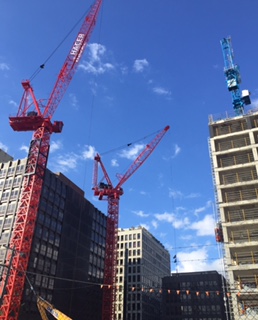The risks, considerations and alternatives to buying an off-the-plan apartment in Melbourne.
What if I told you that you might have been better off financially by not purchasing an off-the-plan Melbourne property in the booming year of 2007-8?
This was certainly the case for an investor I have watched with interest over the last eight years. This buyer purchased an apartment in the inner-city building that I also live in. It’s a fantastic location, on Level 11 with a sunny northern orientation and a huge oversized balcony. The apartment sold for $660,000 off the plan.
At the time of purchase, despite the GFC, Melbourne’s property market was continuing to hold strong as more and more inner city development shot up. The buyer was a true lifestyle investor who wanted to enjoy living in the city, but who also aimed to net a strong capital growth return over the medium term.
Unfortunately, this did not happen. The apartment was put on the market in January 2016 and sold for the price of $660,000, in August 2016. 8 months on the market and that’s right, zero capital growth; zero return on an eight-year investment! If you knew that such a significant six-figure investment would deliver no return over eight years I bet you’d be looking for better ways to invest your money.
While this is definitely a negative example of when buying off-the-plan goes wrong, it illustrates a need for investors to consider all of the risks involved when purchasing. There are even more worrying cases than this, like this one reported by the Financial Review, in which values have not just stagnated, but significantly declined.
At the time of this post, the market has an over-supply of off-the-plan properties – typically, inner-city apartment buildings. The properties are valued highly due to locality amenities and lifestyle, but this is no guarantee of a wise investment.
Over-supply naturally leads to higher vacancy rates – a major factor when considering where to invest in the property market.
There are cases where buying off-the-plan can be ok. One example would be a middle-aged couple with strong assets who want to buy an inner-city apartment. They intend to use it for weekly overnight stays or to offer a place to stay for visiting relatives. In this case, the purchase isn’t overly stretching the couple’s funds and provides significant lifestyle benefits.
In other cases, first-time and seasoned investors are now opting to become ‘rent-vestors’ which means they will rent to live where they like and buy to invest where they can afford. This structure takes some of the pressure off the buyer and provides flexibility.
As a general rule, an older inner-city property is more likely to hold its value than a new development. For a start, buildings from the 1960s-1980s are typically more liveable in terms of space and layout. They have lower body corporate fees, often have a larger balcony and or courtyard, and with some smart spending on renovations and a fresh coat of paint, they’re often very attractive and will continue to be highly sought after when coming to market for sale.
Take the time to consider the risks, advantages and potential disadvantages to buying an off-the-plan property. You may find your needs are better suited by looking elsewhere. If you wish to discuss any property-related topics, don’t hesitate to speak with one of our Property Buyer Agents on +613 8374 7652 or book a Zoom call here
https://calendly.com/propertychat/discussion-with-industry-insider
Industry Insider Property
Level 3, 489 Toorak Road, Toorak 3142
+613 8374 7652
+613 402 346 810
industryinsider.com.au



